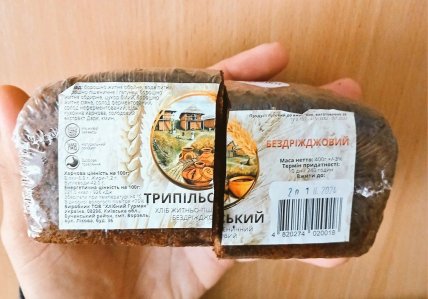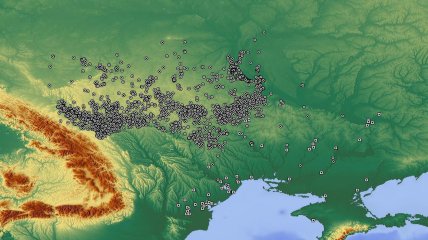A Ukrainian historian debunked the common myth about the Trypillia culture, using bread as a prime example.
The Tripolians were unable to bake bread as they cultivated hard varieties of grains, which could only be processed into groats. Findings indicate that the Tripolian culture was a community of early farmers who used grain grinders but did not know how to produce flour from grains.
This was stated by Ukrainian historian Vadim Nazarenko, an employee of the National Museum of Folk Architecture and Life of Ukraine (Pirogovo). According to him, the modern "Tripolian bread" is merely a marketing gimmick that has no basis in reality.
"The point is that the Tripolians grew hard varieties of grains and used grain grinders. In simple terms, with the technological and agricultural level of that time, they could only obtain groats. Flour was out of the question. Therefore, they could not bake bread," — noted Nazarenko.
The historian also reminded that the Tripolian culture was discovered by the renowned archaeologist Vikentiy Khvoyka in 1898, and during numerous excavations, he found conical fossils. For a long time, these were mistakenly believed to be petrified bread; however, modern analysis revealed that they are coprolites (fossilized excrement) of a wolf or dog.
"Read Galina Pashkevich's book 'Bread of Ancient Ukraine.' It is a good book on the history of agricultural cultures in the lands of Ukraine through the lens of paleobotany," — the historian concluded.

Let us remind you that the Tripolian culture was discovered by the famous archaeologist Vikentiy Khvoyka in 1898. It received its name from the village of Tripolie near Kyiv, where Khvoyka made the most significant finds during the excavations.
The Tripolian culture was prevalent during the Eneolithic period in the territory of Ukraine west of the Dnieper and in Moldova, as well as in eastern Romania, where it is known as the Cucuteni culture. The Vinnytsia and Cherkasy regions are the richest in Tripolian heritage.
After the Tripolians, the Indo-European peoples of the Yamna culture emerged. Findings suggest that the Tripolian culture was a community of early farmers. This culture was already familiar with metals — copper and gold. Scholars believe that plows were used in the agriculture of Tripolia, with oxen serving as draft animals.
Despite the vast number of settlements and material items of the Tripolian culture, there are virtually no burials belonging to it. Very few remains of the culture's bearers have been found, and for this reason, this culture is poorly understood genetically.

Earlier, "Telegraph" reported that a model of a temple of the Tripolian culture was presented to the public in Kyiv. Archaeologists discovered the remains of the building in the village of Nebelivka in the Kirovohrad region.